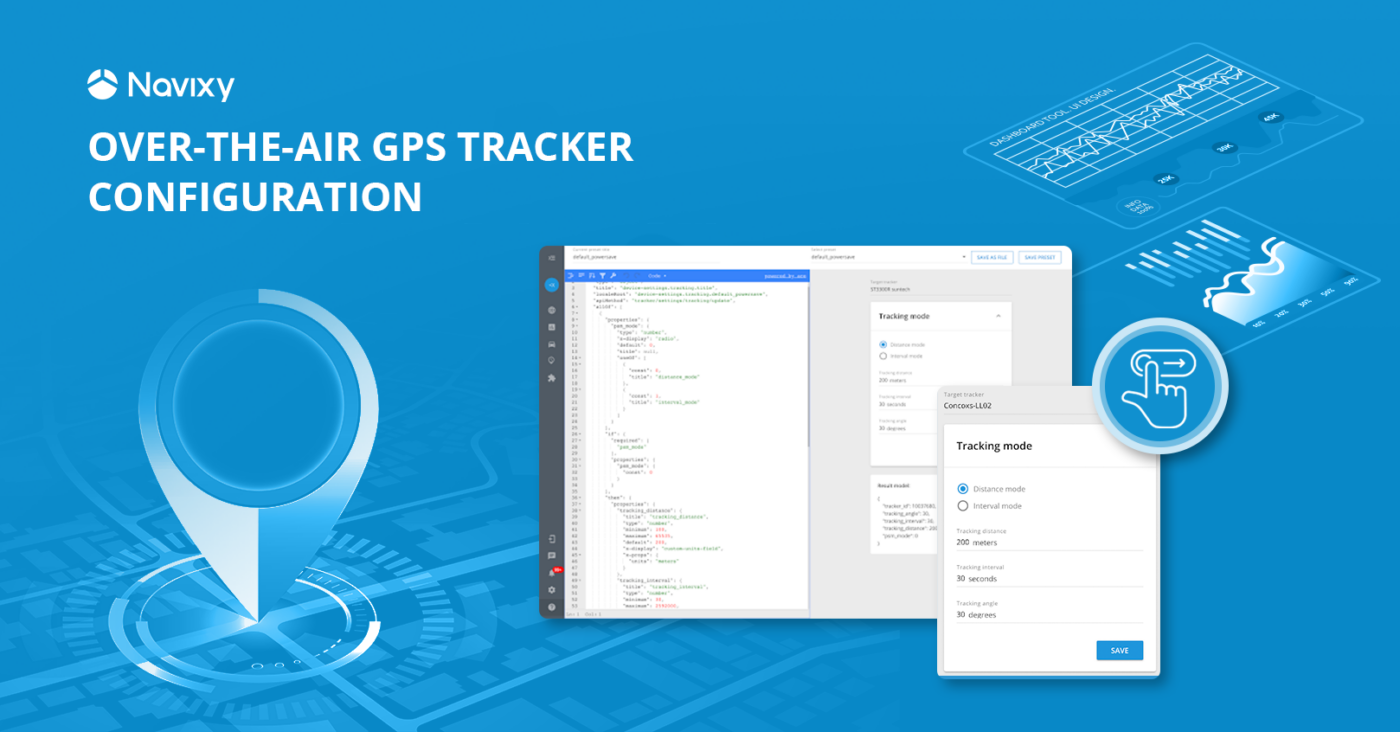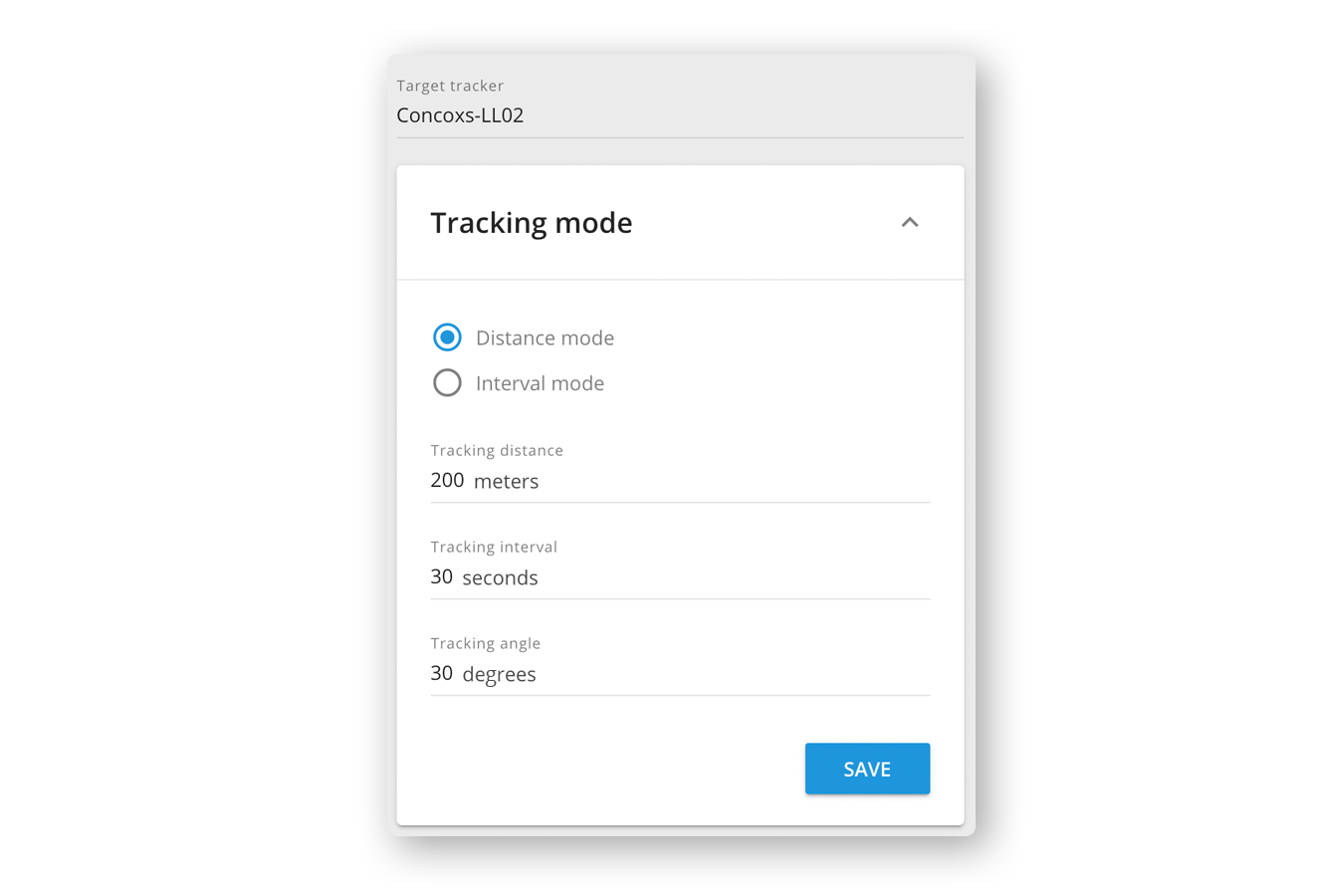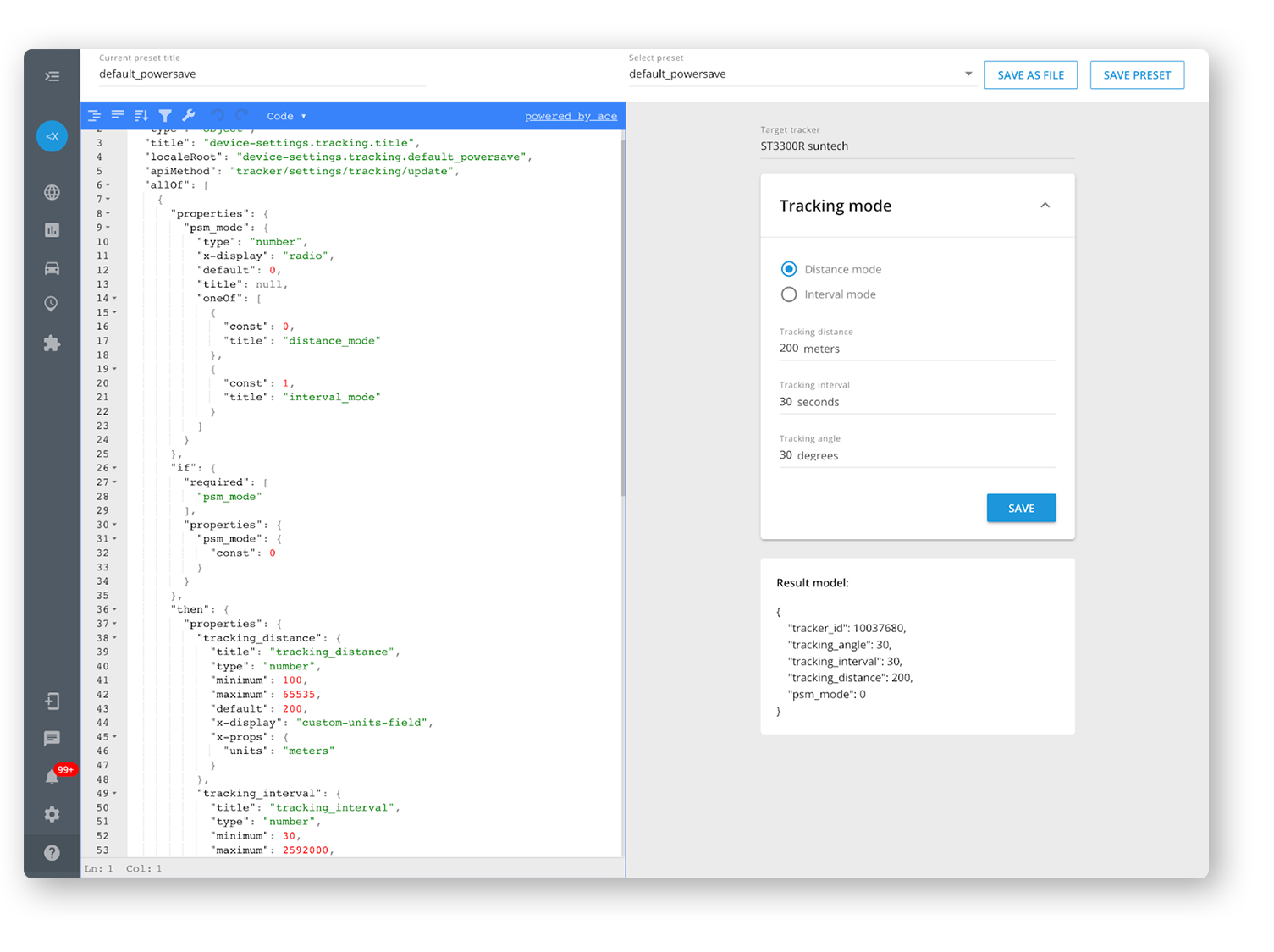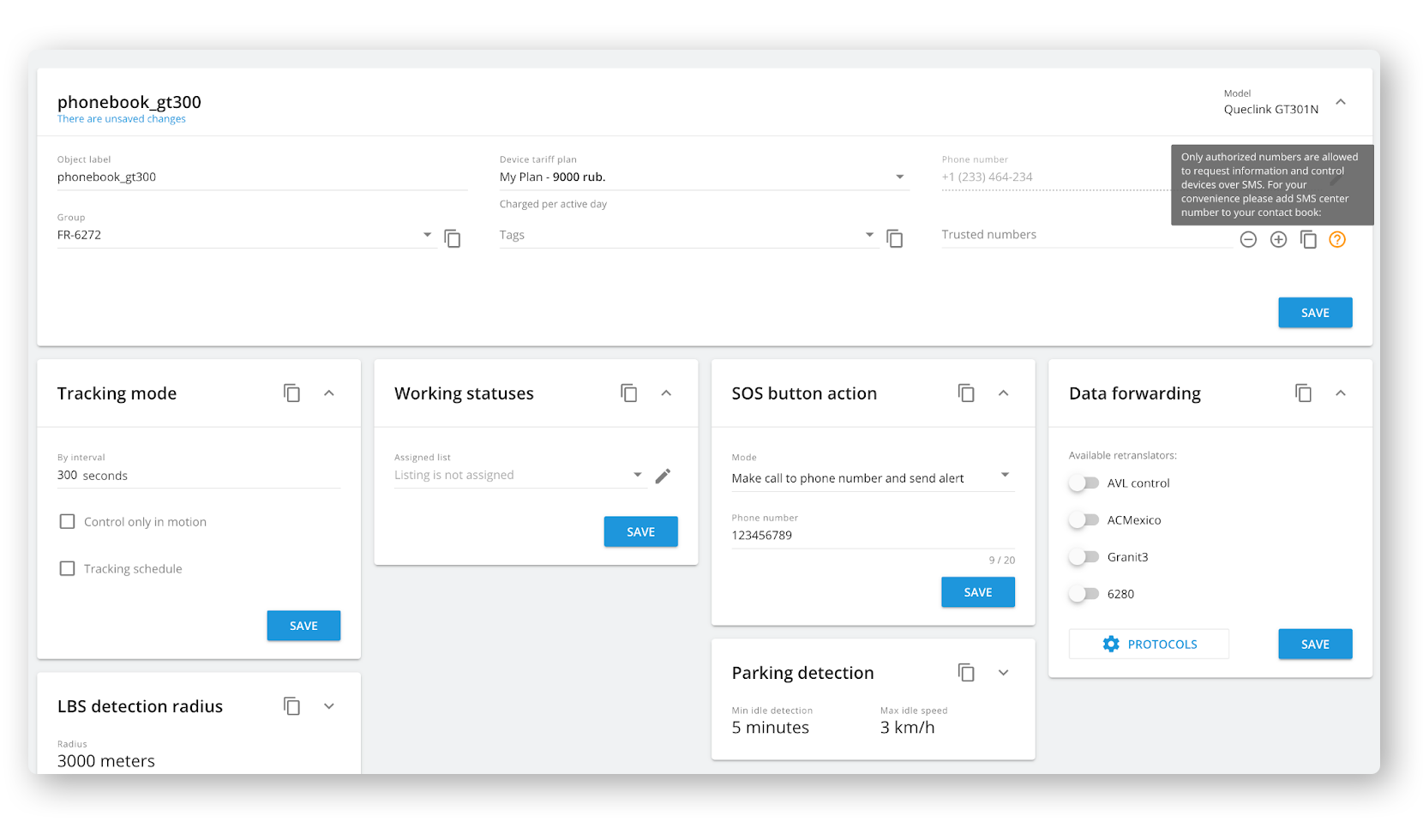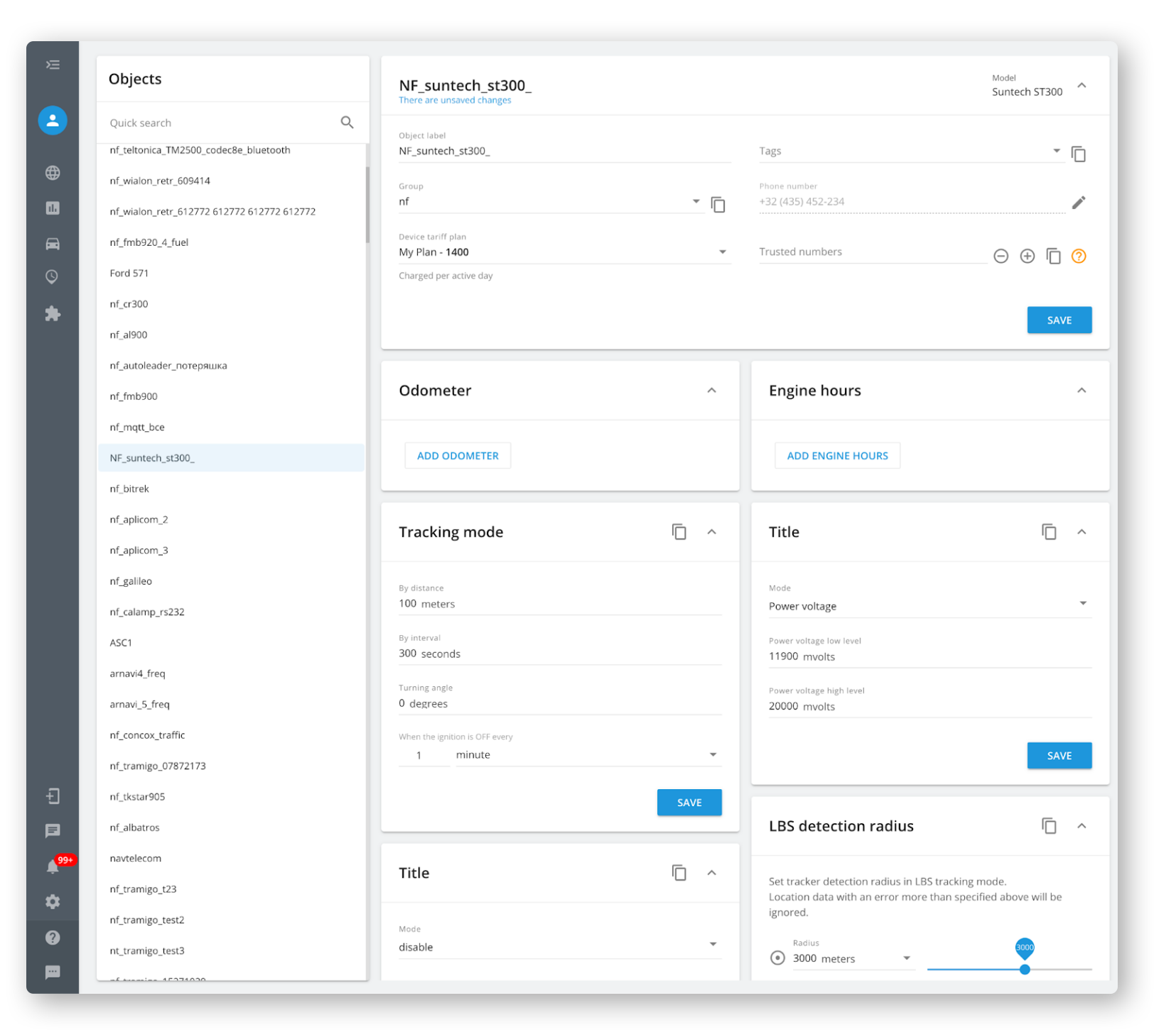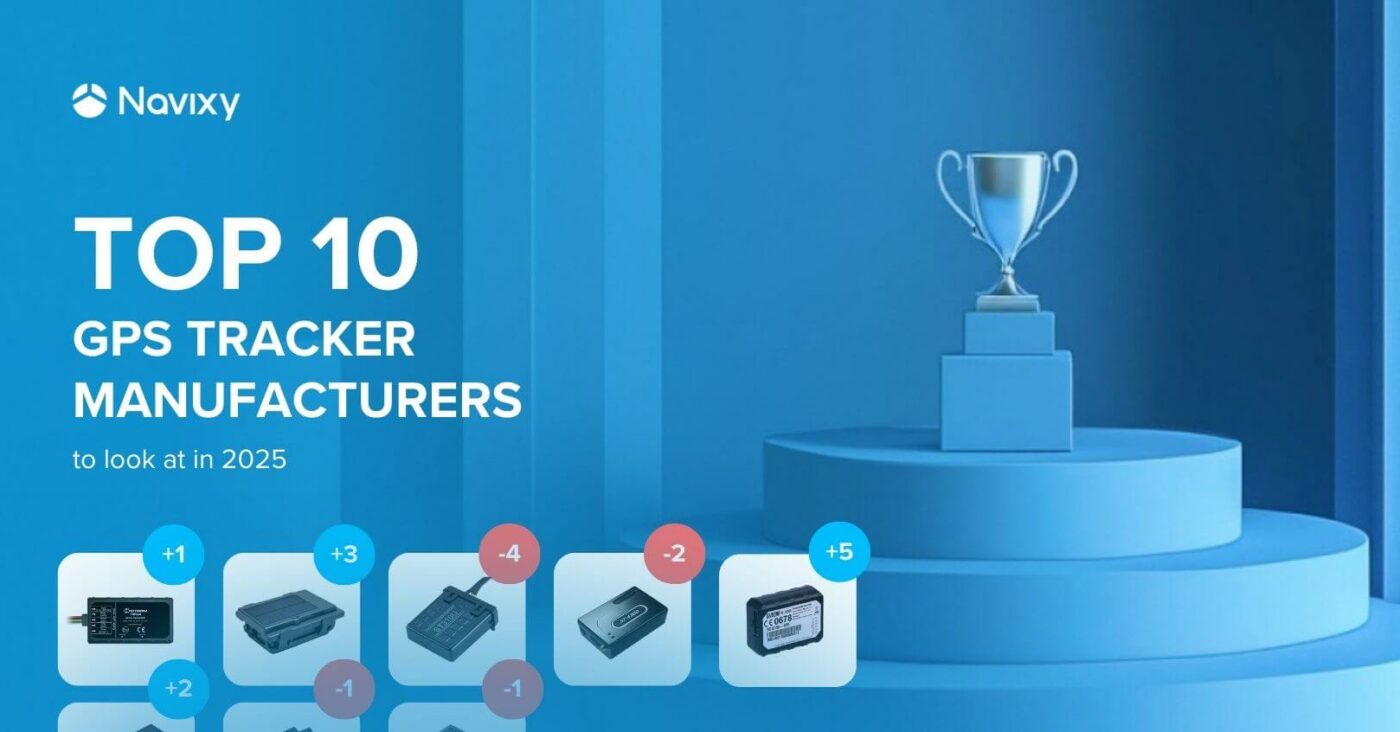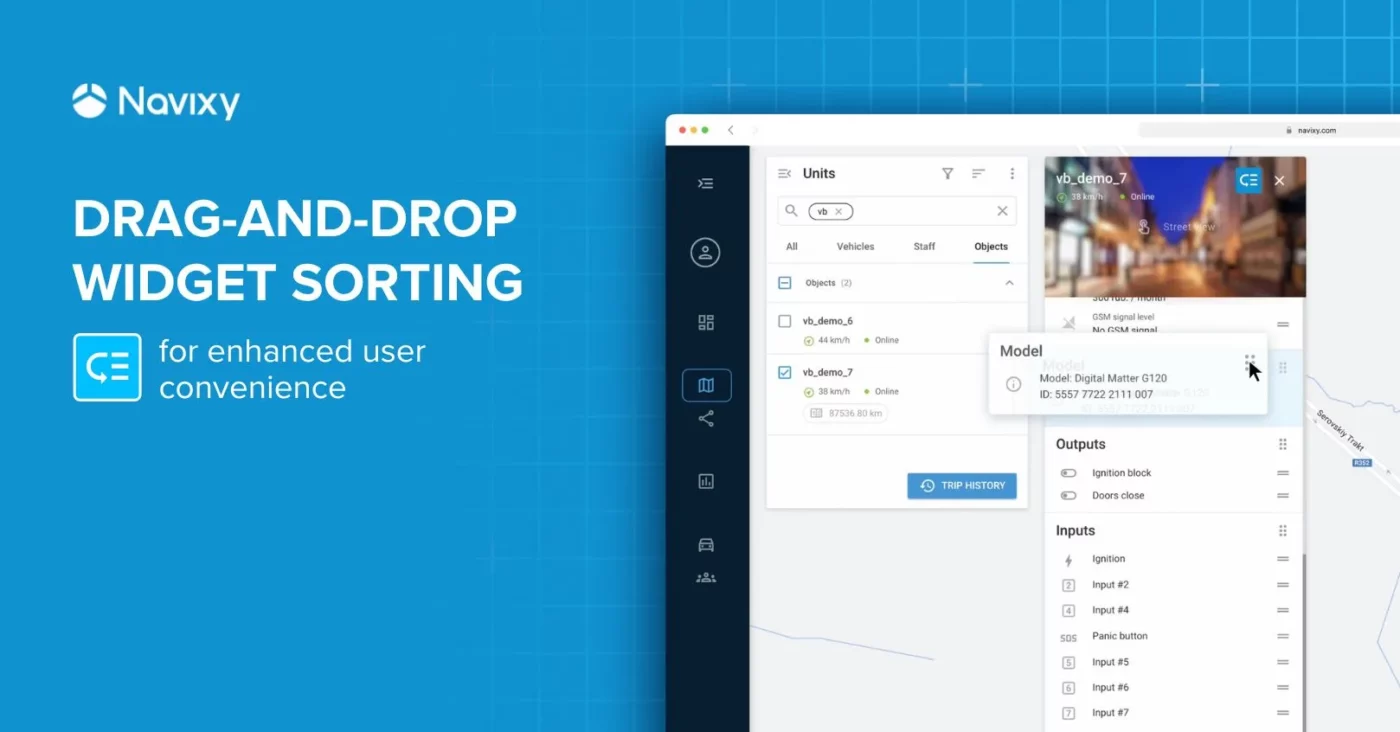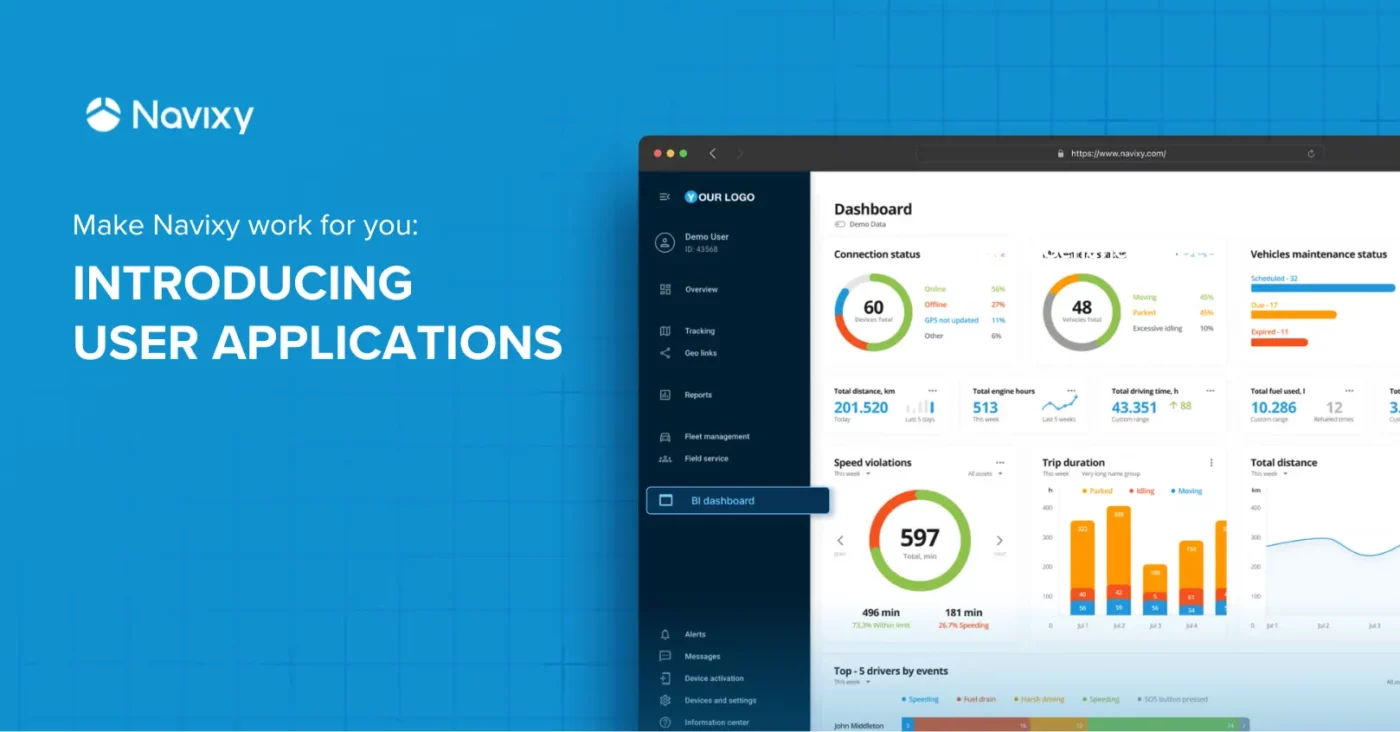Navixy's approach to GPS device management and integration has set a standard of excellence in the industry. Today, more than 1,400 device models can be connected to the platform. Most importantly, however, every integration adheres to the Navixy Advantage Device League's three key principles:
- Instant automatic activation
Device activation on the platform is fully automatic. To do this, the platform independently generates the necessary command packet, including APN settings, and sends them via SMS and IP channels. In just a few seconds, the GPS tracker establishes a connection with the server without requiring professional knowledge or the need to adjust the manual settings via a USB connection and configurator program. This saves time for installers, and often means that end users can simply activate the device in the system themselves. - Full support for characteristic features of devices
Naturally, you want to make sure that your telematics platform supports the device features that you specifically sought out for a given project or need. At Navixy, we not only provide this, but we also strive to make these important features that engineers have worked on as useful and easy to use as possible. So, for example, when the user activates an OBD tracker, all the vehicle parameters being read are instantly visible in the interface and available in reports. - Over-the-Air (OTA) remote control
Users can easily control the device from a distance using simple widgets in the web interface and mobile app. This capability is available for all settings needed for everyday use. For instance, this may include GPS monitoring parameters (position update interval, sleep mode, etc.), driving quality assessment, tracker event logging, and output control. For professional users and integrators, additional widgets are provided, such as for Bluetooth sensor customization, as well as the AirConsole for remote diagnostics and detailed customization.
This shows that at Navixy, we pay a lot of attention to making sure that all the possibilities of modern GPS monitoring and telematics devices are maximized for our users and integrators. We also thank our device manufacturer partners, with whom we cooperate in order to provide early support for new models and accessories they plan to release.
Navixy's next major step in improving device integration is a new version of its Remote Device Management System, which provides integrators and device manufacturers with a more flexible level of OTA device management. Now, using a special interface element description standard within the Navixy Interface Customization Toolkit (Navixy ICT), it’s possible to quickly create user-friendly and visually appealing user interface elements for remote control of IoT devices.
Toolkit for designing widgets by hardware manufacturers and integrators
Using the Navixy ICT, you can customize Navixy platform interfaces by adding new interactive elements or modifying existing ones. In the context of widgets for controlling IoT devices, a Markup language based on JSON Schema is used. This language describes UI components that correspond to customizable parameters of these devices:
- Field type (e.g., number, radio button, checkbox, toggle, slider)
- Allowable value ranges
- Initial value
- Units
- Mandatory
- Order in the interface
- and others
Below is an example of a simple widget and a description of its corresponding object in the Navixy Interface Customization Toolkit:
Its corresponding JSON object:
{
"type": "object",
"title": "device-settings.tracking.title",
"localeRoot": "device-settings.tracking.default_powersave",
"apiMethod": "tracker/settings/tracking/update",
"allOf": [
{
"properties": {
"psm_mode": {
"type": "number",
"x-display": "radio",
"default": 0,
"title": null,
"oneOf": [
{
"const": 0,
"title": "distance_mode"
},
{
"const": 1,
"title": "interval_mode"
}
]
}
},
"if": {
"required": [
"psm_mode"
],
"properties": {
"psm_mode": {
"const": 0
}
}
},
"then": {
"properties": {
"tracking_distance": {
"title": "tracking_distance",
"type": "number",
"minimum": 100,
"maximum": 65535,
"default": 200,
"x-display": "custom-units-field",
"x-props": {
"units": "meters"
}
},
"tracking_interval": {
"title": "tracking_interval",
"type": "number",
"minimum": 30,
"maximum": 2592000,
"default": 30,
"x-display": "custom-units-field",
"x-props": {
"units": "seconds"
}
},
"tracking_angle": {
"title": "tracking_angle",
"type": "number",
"minimum": 10,
"maximum": 180,
"default": 30,
"x-display": "custom-units-field",
"x-props": {
"units": "degrees"
}
}
}
},
"else": {
"properties": {
"psm_interval": {
"title": "psm_interval",
"type": "number",
"minimum": 600,
"maximum": 86400,
"default": 600,
"x-display": "custom-complex-interval",
"x-props": {
"asSeconds": true
}
},
"tracking_distance": {
"type": "number",
"x-display": "hidden",
"default": 200
},
"tracking_interval": {
"type": "number",
"x-display": "hidden",
"default": 30
},
"tracking_angle": {
"type": "number",
"x-display": "hidden",
"default": 30
}
}
}
}
]
}
This description mechanism greatly speeds up the process of integrating new devices into Navixy, as well as supporting new device features as firmware versions are updated and accessories are added.
With these designs, integrators and telematics providers can then independently add and modify widgets for their customers to manage telematics devices and the equipment connected to them. This provides additional flexibility to the solutions they develop, both in terms of device parameters to be managed and user access to management. If your company would like to participate in early testing of this feature, please fill out the application form.
Improved device management interface
The interface for managing device settings has also been noticeably updated. It takes into account current trends in UX design and is powered by new technologies, so it responds quickly to user actions and looks great on screens of any size.
By default, the new device management interface will be available to both customers and integrator providers:
- Client access
The account owner and their assigned admin users can access the interface through the familiar main menu item called "Devices and Settings". In addition, it is possible to quickly navigate to the settings of a specific device by selecting it and right-clicking on it. - Access for integrators
Professional integrators and Telematics Service Providers (TSPs) have access to device settings through the Navixy Admin panel. To do this, select the device of interest in the "Trackers" section and choose "Tracker Settings" from the context menu.
If desired, the service provider can restrict end-users' access to certain device settings. The granularity of this access will be finalized, so we gratefully accept your wishes via the form.
In conclusion
The new Navixy widget system for remote device management allows customers and integrators to utilize telematics equipment in the most efficient yet simple way possible.
With the Navixy ICT toolkit, there is a greater level of flexibility in using standard and specialized device features in IT solutions, and the process of integrating new devices with the platform takes less time. Experience Navixy today with a free trial, or contact us to learn more.
